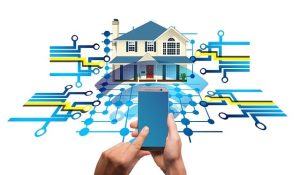Home security is a multifaceted, essential aspect of protecting one's home, encompassing tailored security measures informed by comprehensive assessments that consider unique vulnerabilities, risks, and lifestyle factors. These evaluations include examining all points of entry, existing alarm systems, lighting conditions, landscaping, and more to identify security weaknesses. Homeowners can then implement targeted security solutions, such as child-safety locks or advanced surveillance systems, based on these insights. The integration of cutting-edge security technologies into a customized plan ensures that home defenses are both dynamic and state-of-the-art, adapting to new challenges and maintaining a robust defense system through regular updates. This approach combines advanced technology with practical habits, including staying informed about local crime trends, leveraging smart home features for remote monitoring, and participating in community watch programs to create a comprehensive layered defense system that deters intruders and protects families over the long term. Regular updates and a proactive stance are key to effective risk management and ensuring continued protection of one's home.
Effective home security encompasses a multifaceted approach, extending beyond mere deterrence. This article delves into the critical role of comprehensive assessments in fortifying defenses against potential risks. We explore the key elements of robust risk management for homeowners, providing a detailed step-by-step guide to identify vulnerabilities through security audits. Advanced technologies and personalized solutions tailored to specific risks are also examined, ensuring long-term strategies align with evolving threats to maintain a secure household environment. Join us as we navigate the essentials of safeguarding your home, now and into the future.
- Understanding the Role of Comprehensive Assessments in Home Security
- Key Elements of Effective Risk Management for Homeowners
- Identifying Vulnerabilities: A Step-by-Step Guide for Home Security Audits
- Integrating Advanced Technologies into Your Home Security System
- Personalizing Your Home Security Plan with Risk-Specific Solutions
- Long-Term Strategies for Sustained Home Security and Risk Prevention
Understanding the Role of Comprehensive Assessments in Home Security

In the realm of safeguarding one’s home, comprehensive assessments play a pivotal role in tailoring effective security solutions to individual needs. These assessments are not merely about identifying vulnerabilities but also about understanding the unique dynamics and risks associated with a particular property. A thorough evaluation encompasses a detailed analysis of the physical structure, its environment, and the lifestyle of the residents. It involves an inspection of entry points, windows, doors, alarm systems, lighting, and landscaping to pinpoint potential security breaches. This process ensures that homeowners can mitigate risks by implementing targeted measures that align with their specific circumstances. For instance, a family with young children might prioritize child-safety locks and monitoring systems, while an individual living alone might focus on motion detectors and surveillance cameras. The insights gained from these assessments empower homeowners to make informed decisions about the types of security systems that will be most effective for their homes, thereby enhancing overall protection against theft, vandalism, or other security threats.
Furthermore, comprehensive assessments are a proactive approach to home security, not just a reactive measure. They take into account the latest advancements in security technology and integrate these innovations into a customized security plan. This forward-thinking strategy is crucial in deterring potential intruders and ensuring that the home’s defense mechanisms are robust against new and evolving threats. By regularly updating security measures based on these assessments, homeowners can maintain a state-of-the-art defense system that adapts to an ever-changing security landscape. Home security is not a one-size-fits-all solution; it requires a dynamic and personalized approach that comprehensive assessments provide, ensuring peace of mind for homeowners everywhere.
Key Elements of Effective Risk Management for Homeowners

Home security systems play a pivotal role in effective risk management for homeowners, serving as the first line of defense against potential threats. These sophisticated systems not only deter intruders but also provide an early warning system against fires and carbon monoxide leaks, potentially saving lives and property. A comprehensive home security plan should encompass various layers of protection, including surveillance cameras to monitor entry points and critical areas, motion-activated lights to illuminate blind spots, and door and window sensors to alert homeowners of unauthorized access. Additionally, smart home technology integrates seamlessly with security systems, offering remote monitoring and control via smartphones or computers, which allows homeowners to stay vigilant even when they are away from their property.
Beyond hardware installation, effective risk management for homeowners involves regular maintenance checks and updates to the system to address new threats and vulnerabilities. It is also crucial to educate all household members on security best practices, such as locking doors and windows, maintaining a visible presence within the neighborhood through timers for lights and electronics, and being aware of their surroundings. Regularly reviewing insurance policies to understand coverage details is another important aspect, ensuring that should an incident occur, homeowners are adequately protected financially. In essence, a robust risk management strategy for homeowners is multifaceted, incorporating both technological solutions and proactive behavior to safeguard against various risks, thereby providing peace of mind and security for their most significant investment—their home.
Identifying Vulnerabilities: A Step-by-Step Guide for Home Security Audits

To effectively manage and prevent potential risks at home, it is imperative to conduct thorough security audits that identify vulnerabilities. The first step in this process involves a systematic inspection of your living space. Begin by walking through each room with a critical eye, noting all entry points including doors, windows, and any other possible access areas. Assess the quality of locks, whether deadbolts are installed, and if these are of high-security standards. Evaluate the visibility from the street and the ease of access to your home from different angles. This can reveal potential blind spots where intruders might hide or gain entry unnoticed.
Next, consider your home’s security systems and technologies. Are there cameras installed? If so, are they positioned for optimal coverage and are they operational? Evaluate the effectiveness of any alarm systems you have in place. Ensure that these systems are active, properly maintained, and that all sensors and motion detectors are functioning correctly. Smart home technology can also play a significant role in enhancing security. Smart lights, doorbells with video capabilities, and automated locks should be integrated into your security plan and tested to ensure they are operating as intended. By following these steps, you can identify and address potential weaknesses in your home’s defenses, thereby strengthening your overall home security posture. Regularly updating your audit and adapting to new threats is a proactive approach that can significantly reduce the risk of a security breach.
Integrating Advanced Technologies into Your Home Security System

In the realm of home security, integrating advanced technologies has become paramount in fortifying one’s abode against potential threats. Smart home systems now often feature sophisticated sensors that can detect intrusions, environmental hazards, and unusual activity patterns. These intelligent systems not only alert homeowners to breaches but also enable remote monitoring through smartphones or tablets, providing peace of mind while away. High-definition cameras with night vision capabilities are another critical component, offering clear visuals at all times. Moreover, the advent of artificial intelligence has led to the development of systems that can learn and adapt to your routine, enhancing their effectiveness over time. Biometric locks, which use fingerprints or facial recognition, offer an additional layer of security, ensuring that only authorized individuals can gain entry. The integration of these advanced technologies into home security systems ensures a comprehensive defense strategy tailored to the unique needs of the household.
Advancements in cybersecurity measures are equally vital. With the increasing interconnectivity of home devices, protecting against digital intrusions has become as important as safeguarding physical spaces. Robust encryption protocols and regular software updates help safeguard these systems from hackers and malware. Homeowners can also benefit from security solutions that feature automated firmware updates, ensuring that their systems remain up-to-date with the latest security patches. The combination of these cutting-edge technologies creates a robust home security ecosystem that is proactive in detecting and preventing threats, making it an indispensable aspect of modern risk management and prevention strategies.
Personalizing Your Home Security Plan with Risk-Specific Solutions

When it comes to safeguarding your home, a one-size-fits-all approach to home security is often inadequate. A risk-specific solution tailored to your unique situation is crucial for effective risk management and prevention. Homeowners should conduct comprehensive assessments that consider factors such as the location of their property, the frequency of break-ins in the neighborhood, and any particular vulnerabilities present in the dwelling. By analyzing these elements, you can personalize your home security plan to address specific risks effectively. For instance, if your home is situated in an area prone to flooding, installing water sensors and backflow valves could be part of your strategy. Similarly, if break-ins are a common issue in your vicinity, investing in advanced alarm systems, motion-activated cameras, and robust door locks becomes pivotal. In addition to the hardware, consider the human element; home security plans should include clear protocols for family members, including what to do in case of an emergency, ensuring everyone knows how to respond quickly and appropriately. Regularly updating your plan based on evolving risks or new technologies in home security can further enhance protection. Always stay informed about the latest advancements in security systems, as they can provide additional layers of defense against potential threats, keeping your home and family secure around the clock.
Long-Term Strategies for Sustained Home Security and Risk Prevention

In the realm of home security, long-term strategies are pivotal for ensuring sustained protection and effective risk prevention. A robust home security plan is not a one-time setup but an evolving system that adapts to the changing threats and technological advancements. Homeowners should prioritize regular updates to their security systems, including software and hardware components, to keep up with the latest encryption standards and deterrent technologies. Additionally, staying informed about neighborhood crime trends and local law enforcement recommendations can provide valuable insights for bolstering security measures. Strategic placement of surveillance cameras, motion-detecting lights, and alarms should be complemented by physical barriers such as reinforced doors and windows to create a comprehensive defense system. The integration of smart home technology, which allows for remote monitoring and automated responses to potential threats, further enhances the resilience of one’s home security posture. By combining these technological solutions with lifestyle adjustments like timed lights and secure storage for valuables, homeowners can create a multi-layered approach that deters intruders while ensuring their family’s safety over the long term.
Risk prevention is not merely about fortifying one’s home but also about fostering a security-conscious community. Long-term strategies should include engaging with neighbors to establish a network of vigilant observers and rapid responders in case of an emergency. Community watch programs can be instrumental in deterring criminal activity and providing mutual support for security measures. Furthermore, educating all household members about best practices for home security, such as locking doors and windows, keeping keys secure, and reporting any suspicious activities, is crucial. Regular drills for fire safety and evacuation plans can also mitigate the risks associated with natural disasters or emergencies. By combining technology with community involvement and education, homeowners can ensure a proactive and sustainable approach to home security and risk prevention that endures over time.
In conclusion, comprehensive assessments are pivotal in effective home security and risk management. By identifying vulnerabilities through detailed audits and integrating advanced technologies, homeowners can tailor robust security systems to their unique risks. The integration of key elements from the latest risk management strategies ensures a proactive approach to safeguarding one’s residence. Personalizing home security plans not only enhances protection but also aligns with the long-term objectives of maintaining a secure environment. Homeowners are encouraged to continually evaluate and update their systems to keep pace with evolving threats, thereby ensuring the safety and integrity of their homes. Embracing these practices underscores the importance of a comprehensive approach to home security.
